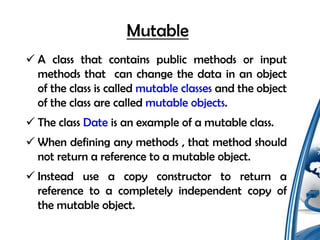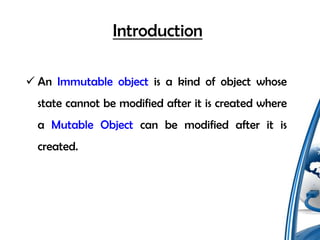immutable class in java with mutable objects
I Make all fieldsattributes private so that direct access is not allowed. Immutable Objects in Java.
Differences Between Mutable And Immutable In Java Edureka
How can we make an object immutable.

. Similarly create copies of your internal mutable objects when necessary to avoid returning the originals in your methods. The strategy for creating an Immutable Class is. A state in Java is implemented with data fields.
An object is considered immutable if its state cannot change after it is constructed. They are final in nature. How to create an immutable class with mutable references.
To make object immutable You must do these steps. By default all the Java classes created by us will be. Although the properties of a data class can be mutable declared using var Its strongly recommended to use immutable properties declared using val so as to keep the.
Maximum reliance on immutable objects is widely accepted as a sound strategy. Immutable Classes and Objects in Java. Kotlin has two interfaces for collection objects Collection and MutableCollection.
There are two types of immutable classes in Java - 1. Dont allow the class to be subclassed. Applying this strategy to SynchronizedRGB results in the following.
It provides methods to change the object. In Java even references are passed-by-value so when a reference type is passed to the constructor of your class you need to make a copy of the instance ie dont use the. This means that the public API of an immutable object guarantees us.
Make all fields final and private 3. Note- Generally a class is mutable unless special effort is made to make it immutable. Mutable objects are objects whose state can be changed.
Maximum reliance on immutable objects is widely accepted as a sound. String Wrapper class objects like Integer Long and. In mutable objects no new objects are formed.
All the collection classes for example List Set or Map implement either of them. An example of mutable object. How to create immutable class with Mutable Object in java.
Most of the Java classes are mutable classes. Class Counter private int i 0. We cannot modify them once they are created.
In immutable objects a new object is formed when the value of the object is altered. Immutable class in java. An immutable class is a class once the class instance is.
Creating immutable with java 14. An immutable object is an object whose internal state remains constant after it has been entirely created. Ii Do not write any setter methods.
If a field is a mutable object create defensive copies of it for getter methods. If a mutable object passed to the constructor must be assigned to a field create a defensive copy. An object is considered immutable if its state cannot change after it is constructed.
What is an immutable class in java. A object is know as immutable if its state can not be changed over-time or we can say after object creation. We can also create immutable class by creating final class that have final data members as the example given below.
Immutable objects are like constants. As you can see in the output Objects state is being. 25 related questions found.

Algodaily Understanding Mutable Vs Immutable Objects Introduction

Differences Between Mutable And Immutable In Java Edureka
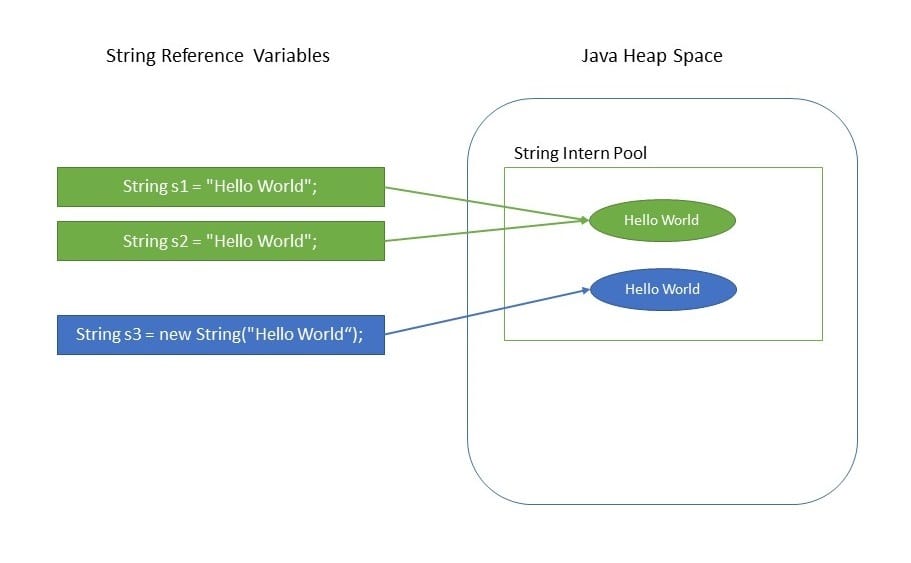
Why String Is Immutable In Java Baeldung

Final Vs Immutability In Java Geeksforgeeks
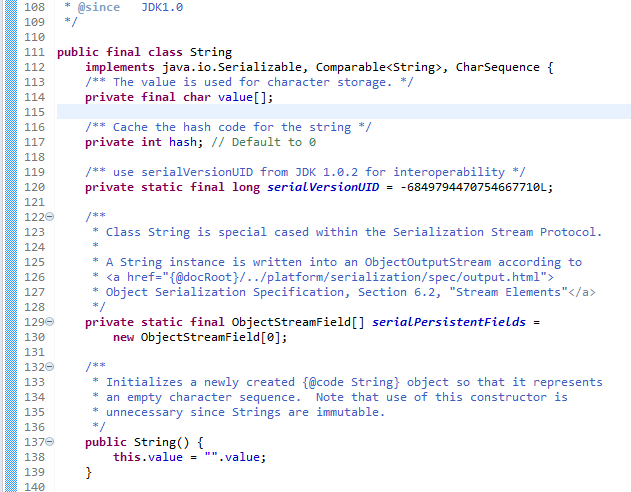
Guide To Make Immutable Class In Java

How To Create An Immutable Class In Java Javaprogramto Com

C 9 Records Immutable Classes Ndepend

How To Create Custom Immutable Class With Mutable Object References In Java Youtube

Mutable String In Java 2 Main Constructors Of Mutable String In Java

Mutable Immutable And Cloneable Objects Chapter Ppt Download

Pdf Automatic Detection Of Immutable Fields In Java Semantic Scholar

Do You Know Immutable Class In Java Why String Is Immutable By Vikram Gupta Javarevisited Medium

Immutable Classes And Objects In Java Coding Guru
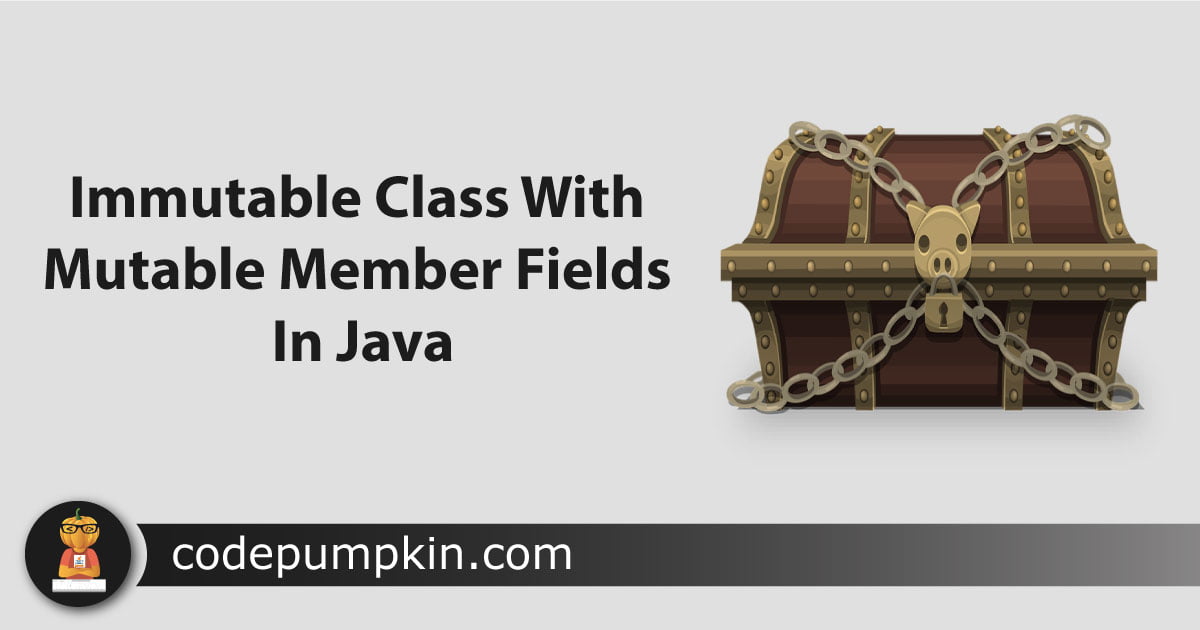
Immutable Class With Mutable Member Fields In Java Code Pumpkin

Immutable Class In Java And Immutable Objects Javagoal
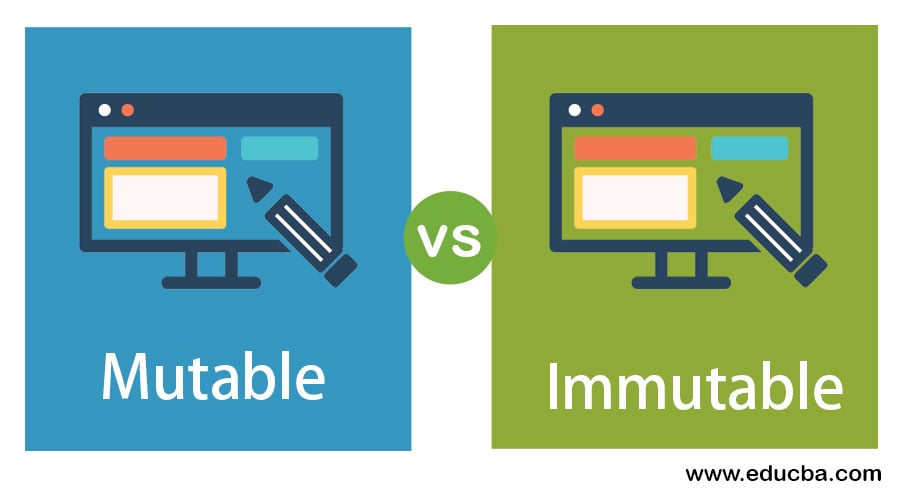
Mutable Vs Immutable Java Top 6 Differences In Data Structures
